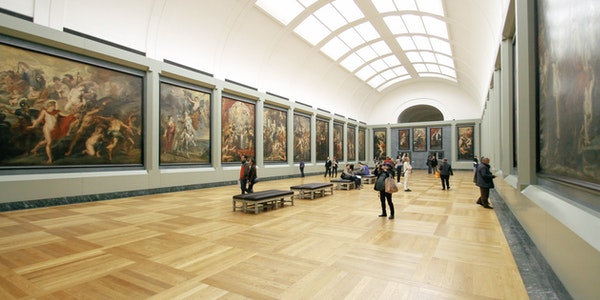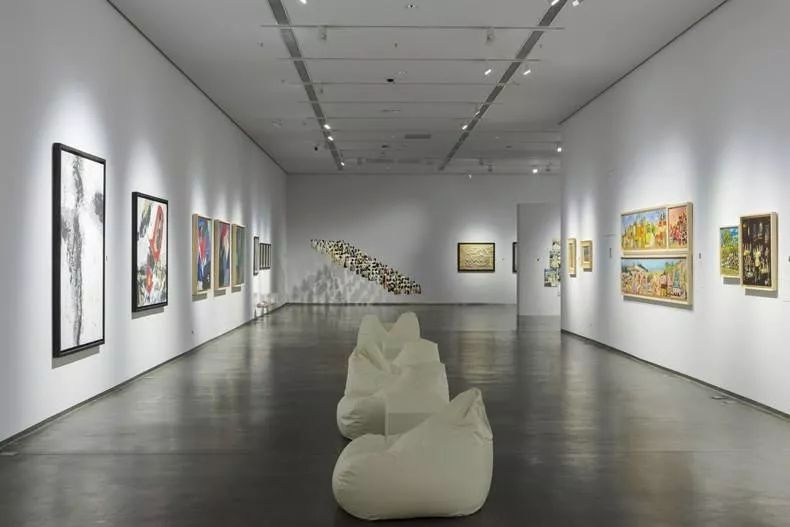1. Foreword
With the rapid development of information technology and the continuous progress of society, the popularization of high-power LED lighting applications, people’s requirements for efficient control and functional diversification of LED lighting are also increasing, and LED intelligent lighting systems have emerged as the times require. The LED intelligent lighting system makes full use of electronic technology, communication technology and computer network technology to organically connect various LED lighting fixtures in the building to achieve effective management and control.
2. Introduction to Ethernet and TCP/IP
Ethernet (Ethernet) is a computer local area network networking technology. The IEEE 802.3 standard provides the technical standard of Ethernet. It specifies the content of the protocol including the physical layer wiring, electrical signals and media access layer.
Ethernet is the most commonly used local area network technology. It has largely replaced other local area network standards such as FDDI and ARCNET. The standard topology of Ethernet is a bus topology, but the current Fast Ethernet (100BASE-T, 1000BASE-T standards) uses switches to minimize conflicts and maximize network speed and efficiency. Networking and organization. In this way, the topology of the Ethernet becomes a star. But logically Ethernet still uses bus topology and CSMA/CD (Carrier Sense Multiple Access/Collision Derect, that is, carrier sense multiple access with collision detection) bus contention technology.
The TCP/IP communication protocol set is the most commonly used data transmission protocol in the current network, and it is the main protocol of the famous Internet. The basic transmission unit of the TCP/IP protocol is the data packet. The TCP protocol is responsible for dividing the data into several data packets, and adding a header to each data packet. The header has a corresponding number to ensure that the data can be restored to the original format in sequence at the data receiving end.
The IP protocol adds the address of the receiving end device to each packet header, so that the data can find where it is going. If data loss or data distortion occurs during transmission, the TCP protocol will automatically require data to be retransmitted. The IP protocol guarantees the transmission of data and is therefore an address protocol. The TCP protocol guarantees the quality of data transmission and is therefore a transmission control protocol.
3. Introduction of DMX512:
Practitioners who understand lighting will know this protocol. It is the most widely used lighting communication protocol today. From USITT, it was published after the Band rate in Colortran’s CMX192 was increased from 153.6 Kbit/s to 250 Kbit/s and 192CH was changed to 512CH (CMX and DMX structures are roughly the same).
When it was first published, the Mark After Break (MAB) was 4uS. In subsequent applications, it was found that there were often problems with signal refresh and the MAB was extended to 8uS and defined as the DMX-512 (1990) version. Its widespread use is due to its simple structure, low cost, easy understanding, etc. Major manufacturers have successively added DMX512 interfaces to their products.
Another major contributor to the successful promotion of the DMX512 protocol and everyone’s willingness to use it is the rapid development of computer lamps and lanterns for decades and their use in large-scale performances. DMX512 is still a new frontier in science, with all kinds of fantastic technologies based on rules.
DMX512 control cables use 5-pin XLR (sometimes 3-pin) to connect devices, with female connectors for transmitters and male connectors for receivers. The specification recommends a two-pair wire (4 connectors) for shielding, although only one pair is required. The second pair of wires is used in unspecified optional situations. It must be noted that some dimmers use these lines to indicate fault and status information. If the dimmer uses the second channel, a specially configured splitter and repeater is required.
The pin assignments for the XLR connectors are as follows:
1 Shield Ground/0 Volt
2 Internal conductor (black) Data –
3 Inner conductor (white) Data +
4 Internal conductor (green) Spare data –
5 Internal conductor (red) Spare data +
4. Introduction of Mainstream LED Control System in the Industry:
4.1: Serial Control System
It is controlled in a cascading manner, and the signal line of each lamp adopts a one-in-one-out method. Representative products include standard 595 and compatible chips, such as DM134, 135, etc. Since the chip of this control method does not generate grayscale itself, if grayscale is required, it needs to be generated by the controller. This will cause the transmission rate of the system to be too high, and it is easy to be disturbed and have poor stability in engineering applications.
Advantages: low cost, simple control. No need to set the address. This control method can be used for some projects that do not require very high stability and reliability.
Disadvantages: Too many signal lines, usually 5 signal lines (clock, data, latch, OE, ground) are required.
Due to the one-in-one-out method, when one lamp fails, the normal operation of the following series of lamps is affected.
The signal line adopts TTL transmission, and the distance between the lamp and the lamp can only be within 1 meter.
For non-standard systems, lamps and controllers must be products of the same manufacturer, otherwise they will not be compatible.
4.2: Fieldbus control system
Divided into DALI bus and RS485 bus two categories.
Introduction to DALI:
DALI stands for Digital Addressable Light Interface. This standard is designed to replace the traditional 1-10V voltage interface for dimming lamp ballasts. DALI defines a standardized digital ballast interface. It does not depend on the design of any manufacturer, and has been adopted as the IEC60929 international standard to ensure the interoperability of ballasts from different lighting equipment manufacturers.
DALI components create a new generation of open digital lighting systems that are flexible, low-cost, and distributed. This new open standard has a big impact on the future business of lighting control solutions. It is fundamentally changing the way lighting control solutions are based on traditional 1 to 10V voltage interfaces.
The DALI standard has defined a DALI network including a maximum of 64 units, 16 groups and 16 scenes. In practical applications, a typical DALI controller controls as many as 40 to 50 lamps, which can be divided into 16 groups, while being able to process some actions in parallel. In a DALI network, 30 to 40 control instructions can be processed per second. DALI is not a real point-to-point network, it replaces the 1-10V voltage interface to control the ballast. DALI controllers are usually connected to a higher-level device network, such as Ethernet, to support more devices and sufficient network bandwidth.
DALI is not suitable for LED lighting control. A DALI network can only control 21 full-color LED lamps. DALI is oriented to traditional lighting control, focusing on the static control and reliability, stability and compatibility of the system. The scale of the LED lighting system is much larger than that of the DALI system, which mainly pursues the artistic effect of lamps and lanterns, and properly takes into account the intelligence of the system. This requires the system to have unlimited expansion capabilities and high scene refresh capabilities.
RS-485 Introduction:
The RS-485 standard was originally formulated and released by the Electronic Industries Association (EIA) in 1983, and was later revised and named TIA/EIA-485-A by the TIA-Communications Industry Association. RS-485 is developed from RS-422 and is proposed to make up for the insufficiency of RS-232.
In order to improve the shortcomings of short communication distance and low speed of RS-232, RS-422 defines a balanced communication interface, which increases the transmission rate to 10Mbps and the transmission distance to 4000 feet (when the rate is lower than 100kbps), and allows the Connect up to 10 receivers on balanced lines.
RS-422 is a one-way balanced transmission specification for single-machine sending and multiple-machine receiving. To expand the range of applications, multipoint, bidirectional communication capabilities were subsequently added, allowing multiple transmitters to be connected to the same bus. At the same time, the driving capability and conflict protection characteristics of the transmitter are increased, and the common mode range of the bus is expanded. This became the EIA RS-485 standard.
RS-485 is an electrical interface specification that only specifies the electrical characteristics of balanced drivers and receivers, but does not specify connectors, transmission cables and communication protocols. The RS-485 standard defines a multi-point, bi-directional (half-duplex) communication link based on a single pair of balanced lines, which is an extremely economical and has a relatively high noise rejection, transmission rate, transmission distance and wide common mode range. communication platform.
The main features of the RS-485 interface are as follows:
- Balanced transmission
- Multipoint Communication
- Driver output voltage (loaded) ≥ 1.5V
- Receiver input threshold: ±200mV
- -7V to +12V bus common mode range
- Maximum input current: 1.0mA/-0.8mA (12Vin/-7Vin)
- Maximum bus load: 32 unit loads (UL)
- Maximum transfer rate: 10Mbps
- Maximum cable length: 4000 feet
5. DMX-NET System Introduction:
Due to the popularization and rapid development of computer network technology and DMX512 standard, in the field of LED lighting control, it is a very sensible method to adopt the existing mature computer network technology, DMX512 standard and products. Using Ethernet, TCP/IP, DMX512 as LED lighting control means having a large number of network products, software resources such as consoles, hubs, cable, fiber optic and wireless connection products and remote control and monitoring technology. In addition, the existing buildings and various places are all over Ethernet, which can facilitate the temporary use of LED lighting projects.
Based on the above factors, the lighting industry has integrated the computing network technology with the DMX512 standard and launched a new generation of LED intelligent lighting control system “DMX-NET” system. The system integrates the advantages of the two technologies to realize the functions of the whole system such as bandwidth, distance, reliability and bidirectionality. This means that more devices can be connected simultaneously on a network, and the distances connected are longer. Transmission control protocols enable higher control quality and reliability of LED lighting systems. Two-way communication enables more efficient remote monitoring and control of equipment. Therefore, the network cost of building a large-scale and reliable LED lighting system is lower.
5.1 DMX-NET System Architecture
DMX-NET system is a system based on TCP/IP protocol and DMX512 protocol, which consists of a backbone network for transmitting TCP/IP protocol and a subnet for DMX512 protocol.
5.2 DMX-NET system component function
The basic PC is the DMX-NET management software of the platform and the center of the entire system, responsible for the control of various functions of the system and the control of receiving remote control signals, such as time control, scene control, and on-site artistic effect control.
The network node controller is responsible for receiving the TCP/IP protocol data sent by the system, and at the same time converting the TCP/IP protocol data into DMX512 protocol data and sending it to the DMX512 device.
The function of DMX Decoder is to receive DMX512 data and convert it into PWM signal to control the dimming or switching of LED lights.
The data flow of the whole system goes from computer to Ethernet to DMX512 network node to DMX Decoder.
5.3 DMX-NET network topology:
The backbone network of the DMX-NET system uses the TCP/IP protocol to transmit data, and does not specify the physical layer transmission medium. Users can choose the appropriate network type according to the network scale. It is more suitable for a super-large LED lighting project to choose optical fiber to transmit data, and for small and medium-sized LED lighting projects to choose Ethernet to transmit data.
The DMX-NET system subnet adopts the standard DMX512 protocol to transmit data, and three solutions are introduced for the setting of the DMX512 start address, which effectively overcomes the problem that the traditional DMX512 equipment needs a DMX512 switch to set the DMX512 start address.
Manually set the start address of DMX Decoder using DMX writer.
Use the DMX writer to automatically set the start address of the DMX Decoder.
Adaptive DMX start address technology, this solution does not require the DMX address writer to set the DMX start address. Each DMX Decoder in the system automatically configures the DMX start address.





